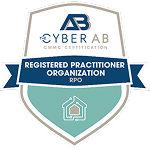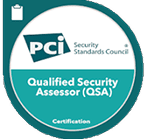Cybersecurity Risk Assessments
Risk assessments are designed to provide a clear indication of those organizational information assets that are at risk for a security breach. This allows for the informed, intelligent application of cybersecurity resources that are appropriate to secure those assets. The National Institute of Standards and Technology (NIST) framework — which was created through collaboration between industry and government — consists of standards, guidelines, and practices to promote the protection of critical infrastructure. The NIST cybersecurity framework states that the goal of a risk assessment is for an organization to understand the cybersecurity risk to organizational assets, individuals and organizational operations, including mission, functions, image, or reputation.
NIST created the NIST Cybersecurity Framework Risk Assessment category that outlines the following steps: 1. Risk responses are identified and prioritized; 2. Asset vulnerabilities are identified and documented; 3. Threat and vulnerability information is received from informed sources; 4. Threats, both internal and external, are identified and documented; 5. Potential business impacts and likelihoods are identified; 6. Threats, vulnerabilities, likelihoods, and impacts are used to determine risk.
NIST 800-53
A NIST 800-53 risk assessment is an evaluation process based on guidelines outlined in NIST Special Publication 800-53, focusing on cybersecurity risks for federal information systems and organizations. It involves identifying and prioritizing risks to ensure compliance with NIST standards and bolster the security of an organization’s IT infrastructure.
Learn more about NIST 800-53NIST 800-171
A NIST 800-171 risk assessment involves evaluating and mitigating risks associated with protecting Controlled Unclassified Information (CUI) in non-federal systems and organizations, as outlined in NIST Special Publication 800-171 guidelines. The assessment aims to ensure compliance with NIST standards and contractual obligations related to the handling and safeguarding of CUI.
Learn more about NIST 800-171NIST AI
A NIST AI risk assessment is an evaluation to identify and mitigate potential risks associated with artificial intelligence (AI) systems. It involves analyzing factors like data quality, algorithmic bias, security vulnerabilities, and ethical considerations to provide guidelines for responsible AI innovation.
Learn more about NIST AINIST CSF
The NIST Cybersecurity Framework (CSF) was developed through collaboration of government and industry to help organizations, in any sector or community, better manage and reduce their cybersecurity risk.
Learn more about NIST CSFLet’s Connect
Facing compliance, cybersecurity, or privacy challenges? We’re here for you.
360 Cyber News and Resources
Explore a wealth of knowledge in our client stories, insightful blogs, cutting-edge white papers, and the latest press releases—your gateway to a repository of expertise and industry insights.







